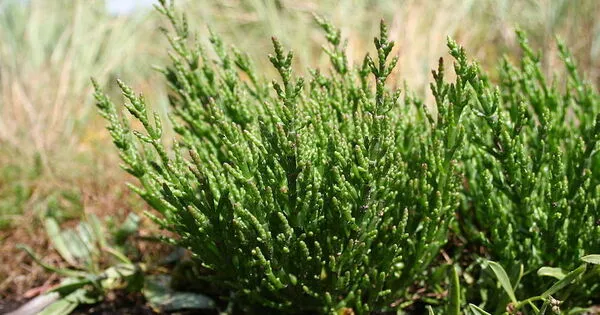When present in high concentrations, sodium salts such as sodium chloride (common table salt) can be harmful to plants. Excess sodium can upset the osmotic balance within plant cells, causing dehydration and stunted growth. Plants, on the other hand, have evolved a variety of mechanisms to deal with high salt concentrations, a process known as salt tolerance or salt detoxification.
A team of researchers discovered a mechanism in thale cress (Arabidopsis thaliana) that allows plants to protect their sensitive stem cells in the meristem at the root tip from salt stress.
A high sodium-containing salt content in the soil is a problem for many plants, causing them to grow poorly or not at all. Soil salinisation is regarded as one of the most serious threats to the ability to feed the world’s population because it renders soils increasingly infertile, particularly in dry regions.
A team of Chinese, German, and Spanish researchers, led by Prof Jörg Kudla of the University of Münster (Germany), has discovered a mechanism in thale cress (Arabidopsis thaliana) that allows plants to protect sensitive stem cells in the meristem at the root tip from salt stress. The meristem, which ensures that the root constantly forms new cells and can thus grow, is particularly sensitive: in contrast to fully formed plant cells, its cells have no vacuole inside where harmful substances can be disposed of.
The signaling pathway we discovered, which combines components of known salt-stress signaling pathways with signaling proteins for the purpose of controlling root development, serves the additional purpose of specifically detoxifying the plant.
Jörg Kudla
The discovery that plants can provide protection against toxic salt stress for specific groups of cells surprised the researchers. Although it was previously known that plants have various mechanisms for dealing with high salt contents in soil water – one is active salt transport out of cells, another is mechanical impregnation of a specific cell layer in the root – what was not previously known was that plants specifically protect the stem cells in their roots.
“The signaling pathway we discovered, which combines components of known salt-stress signaling pathways with signaling proteins for the purpose of controlling root development,” says Jörg Kudla, “serves the additional purpose of specifically detoxifying the plant.”
The mechanism in detail: a special enzyme – a receptor-like kinase called GSO1 – transports the sodium out of the cells of the meristem. To this end, GSO1 activates the kinase SOS2 (SOS stands for “salt overly sensitive”), and this in turn activates a transport protein (SOS1) which pumps sodium ions outwards, via the cell membrane, and, in return, transports protons into the cell. In the case of salt stress, there is an increased formation of GSO1 especially in the meristem cells.

Furthermore, the researchers demonstrated that GSO1 aids in the prevention of excessive salt penetration into the root’s vascular tissue. This vascular tissue is found within plants and transports water and minerals from the roots to the leaves. It is protected from minerals dissolved in soil water penetrating into it in an uncontrolled manner by a mechanical barrier, the Casparian strip. The researchers also discovered that salt stress causes an increase in GSO1 content in the cells that form the Casparian strip.
“GSO1 is a receptor kinase well known in plant developmental biology,” says Jörg Kudla. “It plays an important role in various stages in a plant’s development. Now, for the first time, we were able to demonstrate that it also plays a role in salt tolerance and activates the ‘sodium-out pump’ via an alternative signalling pathway which is presumably not dependent on calcium.” Calcium signals in the cells play a key role in other known adaptive responses of plants to salt stress.
Concerning the methods: The significance of GSO1 was discovered by comparing numerous mutants of various receptor-like kinases in the thale cress. They discovered the enzyme’s reaction partners within the signaling pathways for protecting the meristem and forming the Casparian strip by studying protein interactions. Mass spectrometry and high-resolution microscopy were used in subsequent investigations.





